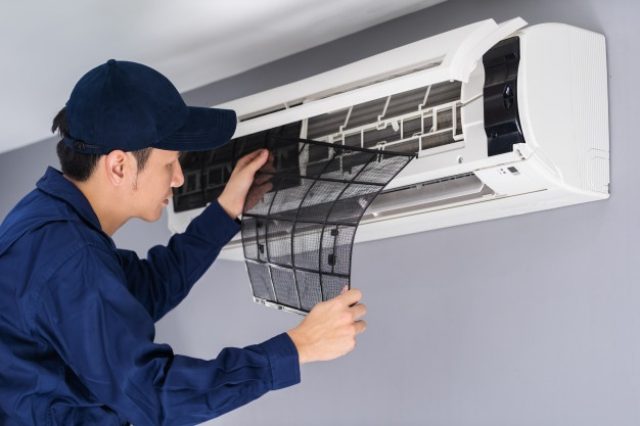Air conditioning systems are indispensable for maintaining a comfortable indoor environment, especially during hot and humid weather. However, like any mechanical system, air conditioners can experience malfunctions that necessitate repair. The process of diagnosing and fixing these issues involves a scientific approach, blending knowledge of thermodynamics, refrigeration, and engineering principles. Diagnosis begins with a thorough inspection of the AC unit to identify the root cause of the problem. Technicians utilize their understanding of thermodynamics, specifically the principles of heat transfer and fluid dynamics, to assess the system’s performance. They examine refrigerant levels, airflow, and temperature differentials to identify irregularities that may be hindering optimal operation. One common issue is refrigerant leakage, which can lead to reduced cooling capacity and inefficient operation.
 Technicians use pressure gauges and temperature measurements to assess the refrigerant system, identifying leaks and determining the appropriate amount of refrigerant needed for optimal performance. They adhere to scientific principles to calculate the correct refrigerant charge, ensuring efficient cooling without overloading the system. Another critical aspect of air conditioning repair involves addressing problems with airflow. Proper airflow is essential for effective cooling, and any obstruction or imbalance can lead to inefficient operation and reduced performance. Technicians use airflow measurements and airflow meters to assess and adjust the system to achieve the optimal balance, ensuring that cooled air reaches all parts of the space evenly. Additionally, the electrical components of an air conditioner require precise diagnosis and repair. Technicians use electrical testing equipment and knowledge of electrical circuits to identify issues such as faulty wiring, malfunctioning capacitors, or damaged electrical connections.
Technicians use pressure gauges and temperature measurements to assess the refrigerant system, identifying leaks and determining the appropriate amount of refrigerant needed for optimal performance. They adhere to scientific principles to calculate the correct refrigerant charge, ensuring efficient cooling without overloading the system. Another critical aspect of air conditioning repair involves addressing problems with airflow. Proper airflow is essential for effective cooling, and any obstruction or imbalance can lead to inefficient operation and reduced performance. Technicians use airflow measurements and airflow meters to assess and adjust the system to achieve the optimal balance, ensuring that cooled air reaches all parts of the space evenly. Additionally, the electrical components of an air conditioner require precise diagnosis and repair. Technicians use electrical testing equipment and knowledge of electrical circuits to identify issues such as faulty wiring, malfunctioning capacitors, or damaged electrical connections.
Applying scientific principles, they follow a systematic approach to troubleshoot and repair electrical problems, ensuring the safe and reliable operation of the air conditioning system. Furthermore, a comprehensive understanding of thermodynamics helps technicians diagnose problems related to the cooling cycle. Compressors, condensers, and evaporators are essential components of the refrigeration cycle, and any malfunction in these parts can disrupt the cooling process. Through careful analysis and diagnostic techniques, technicians pinpoint issues and provide solutions to restore the efficiency of the cooling cycle. In conclusion, air conditioning installation the repair of air conditioning systems involves a scientific and systematic approach that draws upon various principles of thermodynamics, refrigeration, and engineering. Technicians use their knowledge and specialized tools to diagnose issues accurately, whether related to refrigerant levels, airflow, electrical components, or the cooling cycle. By applying scientific principles, they can effectively troubleshoot problems and implement appropriate solutions, ensuring the air conditioning system operates efficiently and provides the desired comfort within indoor spaces.
